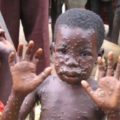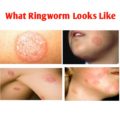What is leprosy?
Leprosy is a disease mainly caused by the bacteria Mycobacterium leprae, which causes damage to the skin and the peripheral nervous system. The disease develops slowly (from six months to 40 years) and results in skin lesions and deformities, most often affecting the cooler places on the body (for example, eyes, nose, earlobes, hands, feet, and testicles). The skin lesions and deformities can be very disfiguring and are the reason that historically people considered infected individuals outcasts in many cultures.
Although human-to-human transmission is the primary source of infection, three other species can carry and (rarely) transfer M. leprae to humans: chimpanzees, mangabey monkeys, and nine-banded armadillos. The disease is termed a chronic granulomatous disease, similar to tuberculosis, because it produces inflammatory nodules (granulomas) in the skin and peripheral nerves over time.
Is Leprosy Contagious?
Leprosy is contagious but is considered to be only mildly contagious. However, acquisition of the disease usually occurs after long-term (months to years) contact with an untreated individual with the disease. It is passed from person to person via droplets from the nose and mouth during close and frequent contact with an untreated individual with leprosy.
What is the history of leprosy (Hansen’s disease)?
Unfortunately, the history of leprosy and its interaction with man is one of suffering and misunderstanding. The newest health research suggests that M. leprae has infected people since at least as early as 4000 B.C., while the first known written reference to the disease was found on Egyptian papyrus in about 1550 B.C. The disease was well recognized in ancient China, Egypt, and India, and there are several references to the disease in the Bible. Many cultures thought the disease was a curse or punishment from the gods because they did not understand the disease, it’s very disfiguring, slow to show symptoms and signs, and had no known treatment. Consequently, priests or holy men treated leprosy, not physicians.
Leprosy (Hansen’s disease) facts
- The progression of leprosy includes skin ulcers and lesions accompanied by loss of sensation and eventual loss of digits and other extremities.
- The progression of leprosy includes skin ulcers and lesions accompanied by loss of sensation and eventual loss of digits and other extremities.
- Leprosy is a slowly developing, progressive disease that damages the skin and nervous system.
- An infection with Mycobacterium leprae or M. lepromatosis bacteria causes leprosy.
- Early symptoms begin in cooler areas of the body and include loss of sensation.
- Signs of leprosy are painless ulcers, skin lesions of hypopigmented macules (flat, pale areas of skin), and eye damage (dryness, reduced blinking). Later, large ulcerations, loss of digits, skin nodules, and facial disfigurement may develop.
- The infection spreads from person to person by nasal secretions or droplets. Leprosy rarely spreads from chimpanzees, mangabey monkeys, and nine-banded armadillos to humans by droplets or direct contact.
- Susceptibility to getting leprosy may be due to certain human genes.
Are there different forms (classifications) of leprosy?
There are multiple forms of leprosy described in the literature. The forms of leprosy depend on the person’s immune response to M. leprae. A good immune response can produce the so-called tuberculoid form of the disease, with limited skin lesions and some asymmetric nerve involvement. A poor immune response can result in the lepromatous form, characterized by extensive skin and symmetric nerve involvement. Some patients may have aspects of both forms. Currently, two classification systems exist in the medical literature: the WHO system and the Ridley-Jopling system. The Ridley-Jopling system is composed of six forms or classifications, listed below according to increasing severity of symptoms:
Indeterminate leprosy: a few hypopigmented macules; can heal spontaneously, this form persists or advances to other forms
Tuberculoid leprosy: a few hypopigmented macules, some are large and some become anesthetic (lose pain sensation); some neural involvement in which nerves become enlarged; spontaneous resolution in a few years, persists or advances to other forms; cell-mediated immune response appears in this classification but is almost absent in lepromatous leprosy
Borderline tuberculoid leprosy: lesions like tuberculoid leprosy but smaller and more numerous with less nerve enlargement. This form may persist, revert to tuberculoid leprosy, or advance to other forms
Mid-borderline leprosy: many reddish plaques that are asymmetrically distributed, moderately anesthetic, with regional adenopathy (swollen lymph nodes). The form may persist, regress to another form, or progress
Borderline lepromatous leprosy: many skin lesions with macules (flat lesions) papules (raised bumps), plaques, and nodules, sometimes with or without anesthesia; the form may persist, regress or progress to lepromatous leprosy
Lepromatous leprosy: Early lesions are pale macules (flat areas) that are diffuse and symmetric. Later medical professionals can find many M. leprae organisms in the lesions. Alopecia (hair loss) occurs. Often patients have no eyebrows or eyelashes. As the disease progresses, nerve involvement leads to anesthetic areas and limb weakness. Progression leads to aseptic necrosis (tissue death from lack of blood to area), lepromas (skin nodules), and disfigurement of many areas, including the face. The lepromatous form does not regress to the other less severe forms. Histoid leprosy is a clinical variant of lepromatous leprosy that presents with clusters of histiocytes (a type of cell involved in the inflammatory response) and a grenz zone (an area of collagen separating the lesion from normal tissue) seen in microscopic tissue sections.
According to official reports received from 138 countries across all WHO regions, the global prevalence of leprosy at the end of 2015 was 176 176 cases (0.2 cases per 10 000 people). The number of new cases reported globally in 2015 was 211 973 (2.9 new cases per 100 000 people). In 2014, 213 899 new cases were reported, and in 2013, 215 656 new cases.
In Nigeria, leprosy remains a disease of public health importance with over 3500 people diagnosed with leprosy every year and about 25% of patients having some degree of disability. Stigma and discrimination against persons and communities affected by leprosy in Nigeria is very high, due to myths and superstitions associated with fear of the disease
Transmission
Leprosy is airborne and is transmitted mainly through spread of nasal secretions of patients infected by Hansen’s bacillus and also through inoculation into broken skin. There are also other possibilities such as transmission through insects which cannot be completely ruled out.
Symptoms
Clinical signs are easy to observe. In a country or area with a high incidence of leprosy, an individual should be regarded as having leprosy if he or she shows one of the following cardinal signs:
- skin lesion consistent with leprosy and with definite sensory loss, with or without thickened nerves
- positive skin smears
The skin lesion can be single or multiple, usually less pigmented than the surrounding normal skin. Sometimes the lesion is reddish or copper-coloured. A variety of skin lesions may be seen but macules (flat), papules (raised), or nodules are common. Sensory loss is a typical feature of leprosy. The skin lesion may show loss of sensation to pin prick and/or light touch. Thickened nerves, mainly peripheral nerve trunks constitute another feature of leprosy. A thickened nerve is often accompanied by other signs as a result of damage to the nerve. There may be loss of sensation in the skin and weakness of muscles supplied by the affected nerve.
Leprosy can be classified on the basis of clinical manifestations and skin smear results. In the classification based on skin smears, patients showing negative smears at all sites are said to have Paucibacillary leprosy (PB), while those showing positive smears at any site are said to have Pultibacillary leprosy (MB).
Diagnosis/Testing
Treatment
Leprosy is curable with a combination of drugs known as multidrug therapy (MDT), as the treatment of leprosy with only one antileprosy drug (monotherapy) will result in development of drug resistance to that drug. The combination of drugs used in the MDT depends on the classification of the disease. Rifampicin, the most important antileprosy medicine, is included in the treatment of both types of leprosy. For the treatment of patients with multibacillary leprosy, WHO recommends a combination of rifampicin, clofazimine and dapsone; for patients with paucibacillary leprosy, MDT uses a combination of Rifampicin and dapsone.
Prevention / Control Measures
In order to reinvigorate efforts for leprosy control WHO has developed the “Global Leprosy Strategy 2016‒2020”, which is structured around 3 core pillars:
Pillar I: Strengthen government ownership, coordination and partnership
Pillar II: Stop leprosy and its complications
Pillar III: Stop discrimination and promote inclusion.
The targets of the new global strategy to be met by 2020 are:
- Zero disabilities among new paediatric patients.
- A grade-2 disability rate of less than 1 case per 1 million people.
- Zero countries with legislation allowing discrimination on basis of leprosy.





